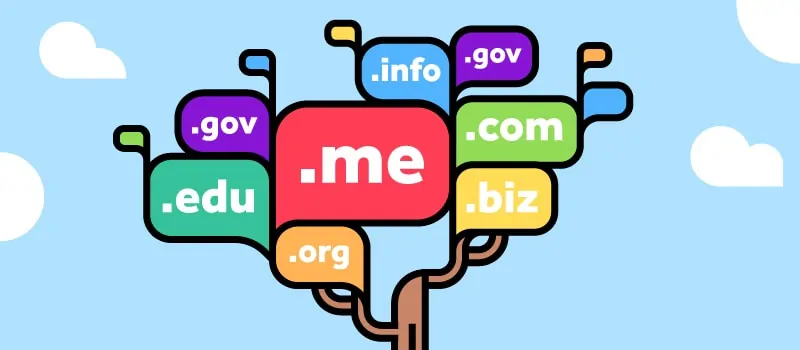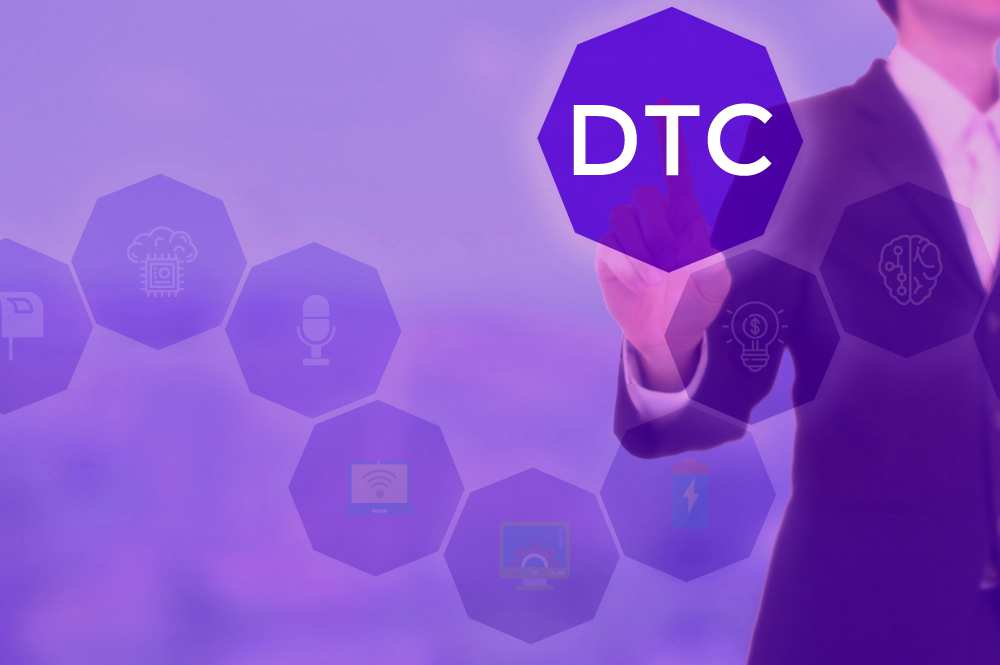A New World of Domains

Dot.Everything Strategies for Web Business
For years, the Web has been defined by over 22 different generic top-level domains (gTLDs, such as .com), and nearly 290 country code TLDs (ccTLDs) including internationalized domain names (IDNs). That's about to change with the introduction of new top-level domains.
With this looming shift, the brand strategy of your online enterprise will also need to make a significant adjustment in the years to come. Smart enterprises are preparing now for the new world of dot.everything and dot.anything domains.
The well-publicized adoption of these new generic toplevel domains, which will be associated with particular brands, interests and business sectors, are aligned exceedingly well with modern-day organizations' focus on improving their brand awareness, further driving revenue, increasing security and deepening user interaction simultaneously. And the benefits extend to everyone who conducts business on the Web.
Big Brand Territory?
A survey from registry services provider Afilias found that 82 percent of major brands are aware of the opportunity to apply for their own TLD, and 54 percent of those companies intended to apply - totaling 44 percent of all of the companies surveyed.
"What's clear is that awareness of the new TLD program is high, and that brands now understand the potential power of their own TLD and are going for it," says Afilias chief marketing officer Roland LaPlante. "Unfortunately, many were unaware of the application deadline (April 12, 2012), and this means that some may miss the boat. Given that tight timeline - and no indication from ICANN as to when businesses will be able to again apply for a dot.Brand domain - companies had to act quickly."
But few organizations by themselves will be able to meet the rigid requirements necessary to obtain approval for their preferred gTLD. Outside of the initial application fee, applicants are also required to prove they can provide a secure infrastructure on which they will operate the gTLD. That's no easy task, even for well-established and technically sophisticated enterprises.
Many of the organizations that are applying do not have the expertise necessary to maintain the required levels of DNS (Domain Name System) stability, one of the primary objectives of ICANN, which is the organization leading the charge into this new world of domains. For this reason, gTLD applicants must turn to companies that do have this type of expertise, including Afilias, Verisign and Neustar, to name but a few.
These well-established providers will help new gTLD applicants capitalize on the many well-documented benefits, including the ability to implement their own security features (such as DNSSEC), set acceptable use policies, establish dispute- resolution policies, and formalize brand infringement regulations.
These aspiring TLD holders also need to make an important decision, however, in whether to make their new dot.anything extension open or closed - for public use or private. While you can expect many to be closed (not available for public registration - likely the brand-focused TLDs), others will take the public route and in so doing offer up a viable opportunity for the Web community as a whole to establish themselves in new, valuable and exciting ways.
With over 1,500 new gTLDs expected when the final release date approaches (the initial rollout is expected to occur some time in 2013), Web enterprises that do not at least have some strategy in place for this significant eventuality will be sent into all but a virtual tailspin in this new Web world. While it is a relatively small group that will ultimately be sponsoring these new top-level domains, the remaining larger populace of Web workers is left to leverage the opportunity.
Industry watchers expect that the new extensions will likely revolve around four distinct categories - brands, communities, geographies and broader, more generic extensions where many assume "anything will go." What is most important, however, is how your organization/enterprise reacts and how you want to let it evolve in the future. Knowing even a minimal amount about the new gTLDs can help to position your enterprise for greater exposure in key communities and bigger profits in the future. But you need a strategy, and herein you will find exactly that.
So, what can you expect when we collectively land in the world of these new gTLDs? This is where things get interesting.
A Dot.Everything Strategy for Every Business
Every Web worker will be affected by the new top-level domains. The benefits to those entities running their own TLD are clear, but what about for everyone else?
The first step that most enterprises are considering, and which was exemplified well with the release of the .XXX extension, was the "defensive domain strategy." Businesses take their brands very seriously, and the mere thought of a brand being associated in a negative way is grounds enough to register a domain name to prevent others from beating them to it.
There are, of course, also many "offensive strategies" that you can employ today. Many new gTLD owners will likely use their new platform to enhance brand image by establishing communities and building out a stronger geographic presence. Let's look at three different approaches your enterprise might consider taking in the months and years to come.
Establish Formal Content Communities
As a Web worker or digital marketer, the currency you essentially trade with (ideally for leads and revenue) is, without question, content. With the introduction of new gTLDs, a fascinating opportunity exists for content marketers - topic-specific communities.
Each and every business has different groups of audiences that they serve. As someone responsible for marketing the products and services of an enterprise, you likely know very well exactly who they are, what they are interested in, and are already producing content for their benefit and yours.
And if you've followed many of the best practices for website architecture, then you probably have a good head start over the competition. Those Internet properties that segment their content into topic-specific silos will be able to either port that content to one of the new top-level domains entirely (taking the necessary precautions to indicate to search engines that the content has been permanently moved via 301 redirects), or use the new gTLD if available to simply curate and aggregate related content and drive new website visitors, and awareness, in the process.
Strengthen Existing Partnerships
There are no freebies in life, and the same holds true on the Web. If you've spent time building vendor relationships with complementary products and services that are exploring the use of their own gTLD, or see the potential in exploring new markets entirely, then a partnership strategy will certainly set you on a positive course towards Web success in the future.
The reason this partner-based approach could be so viable is that branded gTLDs will signal legitimacy and safety to endusers. Some go as far as to suggest that search engines will be forced to treat the new gTLDs differently, particularly as it relates to brand-specific mentions. That's a perfect opportunity for your existing channel partners, as users will over time come to understand that only legitimate, approved parties will be able to participate on particular domains.
Build a Geographic Presence
For enterprises serving a specific geographic area, the new gTLDs will likely serve as a rather significant blessing. One of the categories of new gTLDs will likely be those serving regional areas. If you're a brand that concentrates on serving multiple geographic areas, you should be all but licking your virtual chops in anticipation.
Search engines could treat geographic-centered domain extensions favorably in the future. Signs of this are already emerging. Google's Venice update, one of approximately 40 updates the search engine announced in February, essentially localized organic results for broad search queries.
What that means is that if a user is logged in to Google and their location is set, they'll see results from a particular area. Of course, all of those traditional quality and relevance signals still apply. Local landing pages should be produced, as should appropriate titles, tags and descriptions (location + keyword), and localized page content and link profiles.
But imagine how easy it would be for search engines to factor and value geographic domains higher. It doesn't take a master SEO to figure out that this makes a lot of sense to do. That being said, however, Google's search quality maven Matt Cutts has tempered the enthusiasm of many by indicating that he does not expect a new TLD to get any kind of initial preference of .com, and doubts that it would happen in the long term, either.
You're Already Ready
Anything you read today related to strategies for the introduction of the new generic top-level domains will be nothing but speculation - this article included. With some creative - and positive - thinking, leveraging the hard work you've put into building relationships, and focusing more on attracting specific audiences through topical content or geography-based queries stands only to serve your business well as the top-level domain extensions are released.











